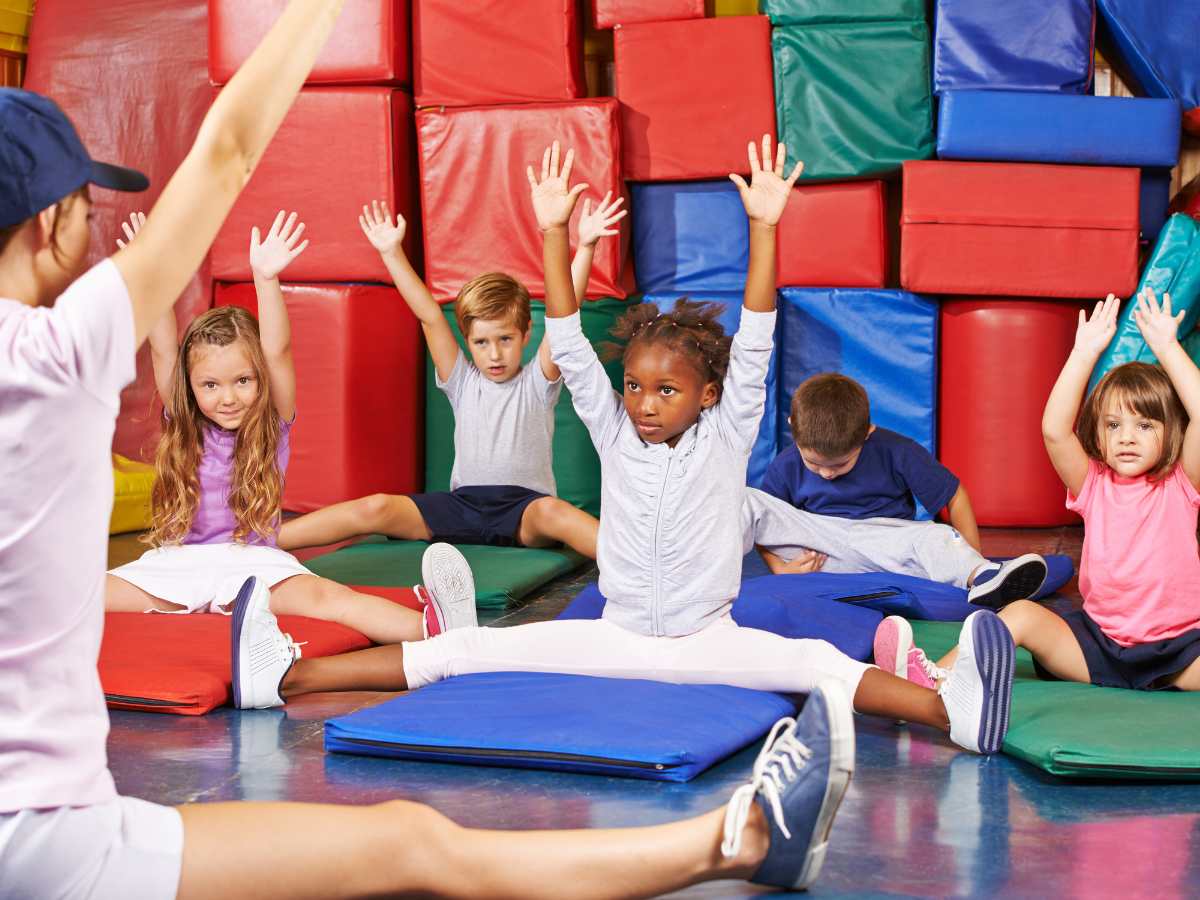In competitive gymnastics for boys and girls, they compete on some of the same apparatus, but not against each other. Each gender also competes on different equipment that takes advantage of gender-specific physical skills, such as the extraordinary upper body strength required for the rings for boys and the higher level of balance and stability girls have to perform advanced balance beam elements. While they do diverge in competition, that doesn’t necessarily mean boys and girls have to train in separate classes.
Co-ed gymnastics classes for littlest kids
In many ways, co-ed gymnastics classes for toddlers are the easiest to manage when teaching both sexes together. Since the parents are there with their children, most of the individual child management falls to them. The toddlers aren’t so interested in what other kids are doing as they’re more focused on their parent who’s assisting them. The more considerable challenge may be handling any high-maintenance parents.
Once you get the young kids, aged three to six, the parents are no longer in class. That’s when the confidence-building, socialization, and teamwork skills part of the gymnastic classes are as essential as the coordination and tumbling skills the kids will learn. In this way, it can be vitally important to the success of co-ed classes when they’re older, that the kids learn how to be confident and good teammates in a mixed-gender group.
Moving on to grade school ages
Providing co-ed classes is still an option for grade school age kids as it’s a time for them to perfect technique on many of the same gymnastic skills and elements they’ll use on different equipment. It’s also an opportunity to run co-ed classes on equipment where girls and boys both compete, such as floor exercise and vault.
The critical team and social skill they should learn in the co-ed classes at this age is how to work more independently, so they keep busy when the instructor is working with a specific student. They should start to learn not to monopolize class or instructor time. Instead they should be able to work on their own and with other kids. It’s the teacher’s responsibility to make sure that any student whose behavior interferes with other kids’ ability to practice their tumbling, stretching, or strength exercises, or who demands a lot of the teacher’s attention, learns how to be a more supportive teammate.
Fortunately, gymnastics isn’t a team competitive sport in the way baseball or basketball are, where boys can easily physically dominate the field of play and leave the girls out. Even so, these ages are when girls may start to feel self-conscious, and boys might get a bit rough. Running co-ed classes at these ages is an opportune time to start helping the boys understand that the girls aren’t likely to appreciate the kind of rough play they enjoy and help the girls learn to assert themselves to get the equipment or teacher time they need.
Middle and upper school challenges
Of course, this is the age group where things get tricky. There will be more natural gender segregation as kids take classes dedicated to a particular apparatus. That doesn’t mean there isn’t a place for co-ed gymnastic classes. As with the grade school kids, co-ed exercise classes can focus on training and skills that both boys and girls need, such as strength, endurance, and flexibility. They can also enroll in the same classes designed to master new gymnastic skills, movements, and elements that are common to all equipment. If you operate an open gymnastics or training class, where students can come to work on their individual goals, these can be run as co-ed hours as well.
The challenge in all these co-ed classes will be making sure they are positive and productive experiences for everyone. Fortunately, many of the obstacles in co-ed physical education in schools, such as girls feeling uncomfortably body conscious and boys eager to compete to their highest capabilities (you can see some of the research on co-ed physical education here, here, and here), aren’t as present in gymnastics as in many typical school gym classes.
Indeed, since many of these studies focus on why girls drop out of phys ed classes, they may not be representative of girls who’ve been physically active and competing in gymnastics for years. Boys can function at their highest physical level in a co-ed gymnastics class. That’s because unlike a phys ed class, they’re not trying to run past opponents or take a ball away.
Teaching good co-ed gymnastics class habits from the start
If you want your gymnastics school to offer co-ed gymnastics classes for post-toddler ages, the key is to start developing good co-ed classroom habits and expectations from the start. The most significant changes between boys and girls may not kick in for another ten years. However, that will be too late to ensure a quality co-ed class experience if you haven’t already created a culture of co-ed class success for all ages. If you do that, even students who come to your studio later in the development and may not have been in a co-ed class in years will learn to adapt to your gym culture
 hbspt.cta.load(3803665, ‘1fea5143-3792-4868-a458-d020e3e5aab0’, {});
hbspt.cta.load(3803665, ‘1fea5143-3792-4868-a458-d020e3e5aab0’, {});






